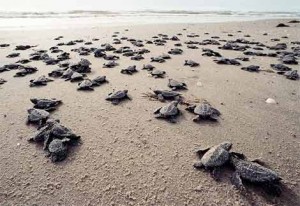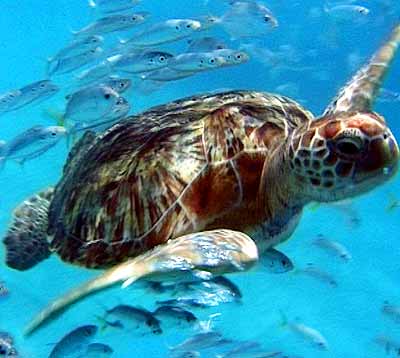Imagine what it would be like to see a turtle that is the same size as you! If you are about5 feettall, this is completely possible inCosta Rica. Many tourists spend their honeymoons or vacations observing or protecting these giant sea turtles and their babies.
 Costa Rica’s home to 5 types of these highly sought after animals: Olive Ridley, Loggerhead, Pacific Green, Leatherback, and Hawksbill sea turtles. Because each have their own seasons for nesting and birthing you have a good chance to see one anytime of the year if you know which beach to go to.
Costa Rica’s home to 5 types of these highly sought after animals: Olive Ridley, Loggerhead, Pacific Green, Leatherback, and Hawksbill sea turtles. Because each have their own seasons for nesting and birthing you have a good chance to see one anytime of the year if you know which beach to go to.
Because of a slow maturation rate and high death rate these giant sea turtles are in danger. Turtles are very sensitive to light and temperature which have been changing due to global warming, pollution, and expanding cities. An example of how this affects turtles is that when they are born they instinctively head towards the brightest light, which should lead them to the water. Instead many turtles run toward land because of bright lights from human homes and cities. They cannot survive if they cannot find the water.
In some places turtles are illegally killed for their meat. Thankfully in Costa Rica they are protected in high seasons by guards and volunteers.
Sea turtles need to be protected both so that future generations can have a chance to see them and so that our food chain won’t be disturbed. Turtles eat jellyfish. If the turtles die off there will be too many jellyfish eating all of the fish that humans now consume. Each animal is a necessary part of life as we know it.
If you’d like to take a turtle tour please go with an official guide and follow the rules. No loud noises, sudden movements, or flashes from cameras or other lights are permitted. These rules will protect the fragile environment we share with the turtles.
By Kerry La

